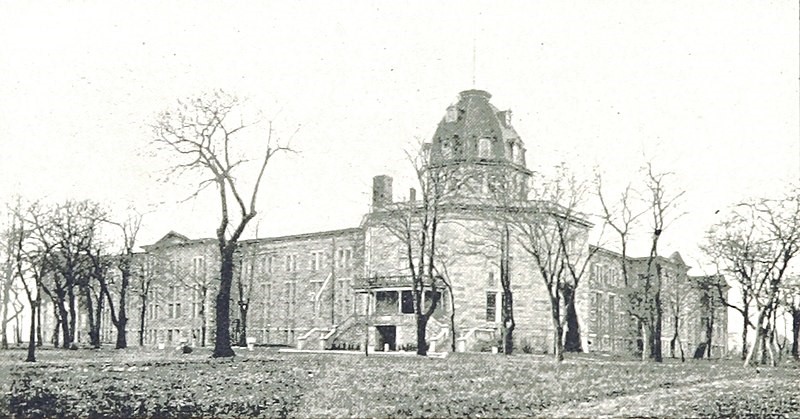Our idea of adventure today might be a road trip to a new destination, or simply getting on a terrifying roller coaster. However, what we envision never seems to include what we watch in movies, like going undercover and spying on an enemy, or traveling around the world in the least amount of days as possible. For journalist Elizabeth Cochrane Seaman, also known by her pen name Nellie Bly, these almost impossible events became realities as her career offered her these kinds of opportunities.1 Even though these assignments seem thrilling, Bly not only completed them of her own free will, but did so to help others by informing the public of various unacceptable behaviors that people were treating others to behind closed doors. There was no doubt in her mind that she would pass up an opportunity to use her gift as an exceptional reporter to liberate those being mistreated who had no voice to be heard. In one of Bly’s early assignments, she willingly allowed herself to be treated as one deemed to have a mental illness. In the 1880’s, she personally experienced the horrors that mentally ill patients went through. in order to have personal insight on the matter.
Bly was still new to journalism and in 1887 editors rarely hired women, so when Joseph Pulitzer’s New York World, a leading newspaper company at the time, offered her the opportunity to investigate an insane asylum, she did not hesitate to accept.2 Bly had so much confidence in herself that she had little doubt that she would be able to pull off the act of being insane. The asylum was located in New York on Blackwell’s Island, where it was known to be easy to get in, but nearly impossible to get out. She had read previous documents about the mistreatment of the mentally unstable and assumed they were all over dramatized; however, she knew little of what she would soon come to experience firsthand.3

Bly started this journey with seventy cents and a single promise from her editor that he would get her released after she spent ten days in the asylum on Blackwell’s Island, even if that meant exposing her identity.4 Bly first began by checking herself into a boarding house for women, and with some acting under her cover name Nellie Brown, she staged an encounter with the police. This soon led four doctors to claim she was insane, and soon after, Bly found herself riding in an ambulance on her way to Blackwell Island.
Once settled into the daily routine that doctors had for the patients at the asylum, Bly began to notice what was occurring within the facility. What happened behind the walls of this mental institution consisted of common mistreatment, such as having few heaters so everyone was freezing, forcing patients to shower in ice cold baths, and feeding them very small portions of food with repulsive tastes.5 The treatment became worse as the attendants were abusive and this misconduct was slowly integrated into part of the day-to-day procedure at the asylum, which Bly had to cooperate with.6 However, she was not alone, as she met other women in the institute that did not have any mental illnesses either, but had been checked in because of miscommunication and other various reasons.
The women Bly encountered each had their own story and explanation for how they ended up in this horrifying mental hospital. One woman specifically had no need to be there, but since she mostly spoke French, she was unable to tell the doctors her story, and because she was crying in fear of never being released, the attendants choked her. Bly recorded many cases such as this one, when women would be hurt and nobody would speak up and change it. The injures towards one of the women resulted in a black eye, and when the doctors asked about it, the nurses claimed she entered the facility with it. Many others shared with Bly the details of the abuse they encountered, including Mrs. Cotter:
Then they tied my hands and feet, and, throwing a sheet over my head, twisted it tightly around my throat, so I could not scream, and thus put me in a bathtub filled with cold water. They held me under until I gave up every hope and became senseless. At other times they took hold of my ears and beat my head on the floor and against the wall. Then they pulled out my hair by the roots, so that it will never grow in again.7

As promised, Bly’s editor got her out of the asylum ten days later, and soon after, Bly was able to share the outrage she discovered on her assignment with the world.8 Bly became that needed voice the patients in Blackwell’s Island Asylum were lacking, leading to a contribution of one million dollars per year towards caring for those with mental illnesses in New York City. This dreadful news had shocked the public and had given Bly the publicity she needed to boost her career. Yet she did not stop there. Bly continued with her passion of reporting and went undercover in places such as women’s prisons, and later traveled to the front lines during War World I.9 During Bly’s profession as a journalist she changed the views that individuals had towards the poor and helpless and how they should be treated in the hopes of having a future in which all people would be given the respect and dignity they deserve.
- Richard Ernsberger Jr., “Nellie Bly: Fearless Reporter,” American History 50, no. 2 (June 2015): 77. ↵
- MasterFILE Premier, August 2017, s.v. “Nellie Bly,” by Keira Stevenson. ↵
- Nellie Bly, Ten Days in a Mad-House (New York: Ian L. Munro, 1887), 1. ↵
- Nellie Bly, Ten Days in a Mad-House (New York: Ian L. Munro, 1887), 3. ↵
- Nellie Bly, Ten Days in a Mad-House (New York: Ian L. Munro, 1887), 13. ↵
- MasterFILE Premier, August 2017, s.v. “Nellie Bly,” by Keira Stevenson. ↵
- Nellie Bly, Ten Days in a Mad-House (New York: Ian L. Munro, 1887), 14. ↵
- Jean Marie Lutes, “Into the Madhouse with Nellie Bly: Girl Stunt Reporting in Late Nineteenth-Century America,” American Quarterly 54, no. 2 (2002): 218. ↵
- Richard Ernsberger Jr., “Nellie Bly: Fearless Reporter,” American History 50, no. 2 (June 2015): 77. ↵



77 comments
Janice West Seaman
A fine tribute to a remarkable spirit.
Caily Torres
This article shows the sad truth of how people were treated in asylums back then. People who were admitted weren’t treated as human beings because they were perceived as their illness and their illness only. Elizabeth Cochrane Seaman was brave to go undercover and reveal the truth behind the treatment of these people. As a result, she illuminated the issue at hand and helped people get the treatment they deserved. Although treatment of these patients still isn’t ideal, Seaman was the voice they needed that improved this side of the medical field.
Alicia Martinez
The type of investigations that Elizabeth Cochrane Seaman conducted to have accurate stories takes journalism to a new level. Going as far as pretending to be an asylum patient so she can have the same experience as the actual patients gave her an opportunity to advocate for those that were being mistreated. This article was well put together and gave the entire story of this particular investigation without providing too much information. Readers are able to connect to the type of impact that personal stories such as this are able to have and understand what kind of difference one person’s work can make.
Aaron Sandoval
Elizabeth Cochrane Seaman changed the way we see investigative journalism today, and without her and the impact she had on journalism at the time, there would be a noticeable difference in journalism. But her impact on the mental health system was influential in changing how those deemed mentally insane are treated. Your article is well done in portraying Elizabeth Cochrane Seaman, and her time at Blackwell Island.
Melissa Garza
This is an incredible article Megan! I have always wondered what the inside of an asylum must be like, but obviously no one coming out of there is to be believed. It’s very helpful that she had people on the outside to assist her in this process because otherwise she would have very little chance of getting out. It is also quite surprising that she found someone in the same situation as her in the asylum. The abuse of mentally ill individuals is very upsetting being that the asylum is supposed to be a way to help them or at least bring them comfort.
Michael Thompson
This is a cool article, and a very interesting story of a pioneer in her field for women. Obviously to be able to enter a job field in which only men were in was huge, so it makes sense that she got a risky job. You would think maybe she would get a mediocre story, such as a baby broke a silly record, or something like that. But I guess they wouldn’t have that back then. So risky, life threatening stories would be all that’s left. But point is that it is cool that she was able to break the glass ceiling, and continued to do so even after her breakthrough.
Cristianna Tovar
The first paragraph of this article was very intriguing and gave me lots of insight into what type of person Nellie Bly was – brave, adventurous, and willing to put herself on the line to help others. The fact that Bly pretended to be insane just goes to show how seriously she took her job, and that is very empowering. This article touched a little bit on the fact that some people are in insane asylums but are not actually insane, which occurs more often than one would think. Bly served as the voice for the many women who were abused and voiceless against the nurses at the asylum. She is a true hero and deserves more recognition because I had never heard about her accomplishments until I read this article.
Abigale Carney
This article was very interesting to read! It reminds me of a movie that I recently watched called Shutter Island. I agree with an earlier comment that stated that “sometimes the people that run these asylums are crazier than the patients”. Nellie Bly is extremely brave for speaking up for those who were incapable of doing so; she seems like she genuinely cared for these patients, and ultimately got them the help they needed.
Javier Camacho
I remember having to read about this situation a couple of semesters ago and initially thinking that Nellie Bly was not thinking clearly for wanting to go to this Asylum by choice. Everyone today knows that the word “Asylum” carries a negative connotation. And the word lived up to todays standards even back then. I have to say, I think they sent people who were “crazy” to these asylums, but i think the way these patients were treated was even crazier. Just re reading the information I already knew from this article gave me the chills all over again knowing that Nellie did this all to prove herself and make a name for herself as a very good reporter. The bravery this must have took is unimaginable and i have lots of respect for Nellie Bly.
Sebastian Portilla
Sometimes I feel the people who run the Insane Asylum are crazier than the people inside. The way they treated the prisoners were extremely harsh and not humane. And honestly it hasn’t change, we treat the people at the border in the same conditions or Maybe worse. This was a really interesting article. Sometimes it seems like nothing has changed.